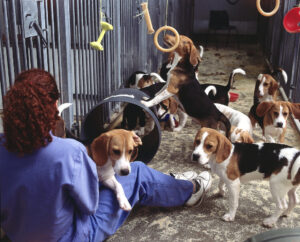Bringing a dog and a cat under the same roof doesn’t have to be a disaster waiting to happen. With a little preparation, a lot of patience, and some savvy behavior-reading, you can help your pets build a peaceful, even affectionate relationship.
Let’s walk through the how-tos, the don’ts, and the tiny signs you might miss that say everything’s going smoothly—or going south.
Why First Impressions Matter More Than You Think
Animals aren’t all that different from people when it comes to meeting someone new. First impressions set the tone. A bad first encounter—say, a dog barreling in like a wrecking ball while the cat freaks out and bolts—can cement fear or territorial behavior that lingers for weeks.
That’s why you shouldn’t just toss them in a room together and hope for the best. Dogs and cats communicate very differently, and without a buffer, things can go sideways fast. The key? Controlled, calm, and gradual introductions.
Step 1: Know Thy Pet
Before you even think about introductions, take stock of each animal’s personality.
- Is your dog prey-driven or high-energy? Breeds like terriers or herding dogs might need extra supervision.
- Has your cat ever been around dogs? A confident, dog-savvy cat might adjust quickly, but a skittish one will need more time.
- Is your dog socialized? A well-trained dog who knows how to “leave it” or “stay” is much easier to manage during introductions.
This is where honesty matters. Wishful thinking won’t help if your dog tends to lunge at squirrels or your cat hides from every new sound.
Step 2: Create Safe Zones
Before the first meeting, make sure both pets have safe, separate spaces they can retreat to. A room with a baby gate works well for cats—they can jump in and out, while your dog stays out. Dogs might need a crate or a designated room of their own.
Let them get used to each other’s scent first. Swap their bedding or use a soft towel to gently rub one animal, then leave it near the other. It’s low-stakes exposure—and it works wonders for desensitization.
Step 3: Controlled, No-Contact Introduction
Now it’s time to let them “see” each other—but not touch.
Put your dog on a leash and have them sit or lie down in a relaxed spot. Let your cat enter the room on their own terms. Don’t force it. Some cats will boldly strut in and stare the dog down. Others might creep along the walls or just peek from a doorway.
Keep the leash slack, and watch your dog’s body language. Ears forward? Tail stiff and high? Muscles tight? That’s alertness—and possibly trouble. On the other hand, a relaxed posture, soft eyes, and a wagging tail are promising signs.
If your dog starts whining, barking, or pulling toward the cat, gently redirect their focus. Use treats or commands. Don’t punish—but don’t reward fixated behavior either.
Step 4: Short, Positive Sessions
Think short and sweet. Five to ten minutes is plenty for the first few “viewings.”
After each session, separate them again and give both pets a chance to decompress. Gradually increase the length of time they’re in the same space, but always supervised.
If your cat hisses or swats, don’t freak out. That’s normal boundary-setting. Just make sure your dog doesn’t retaliate or escalate.
Over the next several days—or weeks, depending on the animals—these meetings will tell you how things are progressing.
Step 5: The First Free-Roam Interaction
Once your dog can calmly ignore the cat while leashed, and your cat is willing to walk past the dog without puffing up or running, you’re ready to try an off-leash interaction.
Choose a neutral room (not near food or litter boxes), and keep distractions low. Your dog should be a bit tired out—after a walk or playtime—and your cat should have an escape route.
Let your dog off leash but keep treats on hand and be ready to step in. Watch for tense standoffs or sudden movements. Interrupt any chasing immediately with a calm, firm “Leave it” or “Come.”
Signs It’s Going Well
- They sniff each other and walk away.
- Your cat is grooming or lying down in the same room.
- Your dog lies down or shows interest without lunging or barking.
- They eat in the same room without tension (at a safe distance).
These are huge wins! Celebrate them—but stay vigilant. Even when things seem peaceful, never leave them alone together unsupervised for the first several weeks.
What If It’s Not Going Well?
Not every dog and cat pair will become cuddle buddies—and that’s okay. Some just reach peaceful coexistence, where they mostly ignore each other.
But if your dog is obsessive (won’t stop staring, whining, or lunging) or your cat refuses to leave hiding, it’s time to slow down.
You might need to return to scent-swapping or only do visual introductions for a longer period. If there’s growling, snapping, or biting, it’s wise to bring in a professional trainer or behaviorist.

Helpful Tools & Tricks
- Baby gates with cat doors: Keeps spaces separated while allowing cat freedom.
- Treats: Reinforce calm behavior on both sides.
- Clickers: Useful for dog training during interactions.
- High perches or cat trees: Let cats observe from a safe distance.
- Pheromone diffusers (like Feliway): Can reduce cat anxiety.
Final Thoughts: Patience Pays Off
Rome wasn’t built in a day—and dog-cat friendships aren’t either. The most important ingredient here is time. Every successful introduction I’ve seen was the result of careful observation, slow pacing, and respect for each pet’s comfort zone.
And when it works? Watching your cat bat your dog’s ears while he just blinks back lazily, or finding them curled up together on the couch—it’s magic.
Just remember: your pets aren’t just reacting to each other, they’re reacting to you. Stay calm, positive, and encouraging, and they’ll take their cues from your energy.
You’re not just introducing animals. You’re building a future family dynamic. And with the right approach, it can be a peaceful, even joyful, one.
- Smelly House Because of Dog? Take These Hygiene Tips - May 20, 2025
- How to Introduce a Dog To a Cats Without Chaos - May 6, 2025
- 4 Best Cavapoo Rescues in the UK 2024 - April 5, 2024








